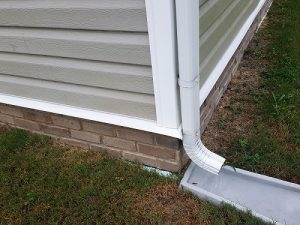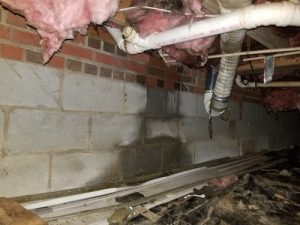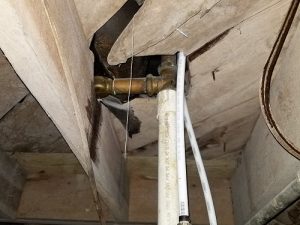
We recently had an opportunity to catch up with Eric Coates of Detailed Home Inspections Inc. about the affects that water can have on your home. Here is what he shared with us.
Water is not your house’s friend!
I really do love my job. However, there are days that I do not like my job. Hurricane Matthew came
through our area in 2016. It dumped 10 inches of rain that day. I had the privilege of performing two
home inspections that day! I am a Boy Scout – so, I am prepared for the rain. I have a good rain suit,
waterproof boots, waterproof equipment/tools, etc. However, having the right equipment does not
make it any easier to work in the rain. Even though I may not like it, I can learn a LOT about a house in
the rain.
Other than people, water causes more problems to a house than any anything else. Your house is made
of many materials that can decay and/or be damaged by water. Water is not your house’s friend! If you
don’t manage the water at your house, it will cause problems. Houses are built to keep water out and
to keep water away. You need to maintain your house so that it keeps the water out and away.
There are many things that you can check yourself. Here is a beginning list. Once you do all of this,
contact me and I will be glad to help you create a longer list!
1. Look through your attic for stains. Take a flashlight up there and scan through the attic looking
for stains. Take a close look at roof penetrations such as plumbing vent pipes, exhaust pipes,
bathroom fan pipes, etc. Turn the lights off and look for signs of light in the attic. Naturally, you
will see light at the attic vents and you may see indirect light at the roof penetrations. But,
make sure you do not have a beam of light coming it. If there is an HVAC unit or a water heater
in the attic, look at the equipment and around the equipment for stains or signs of leaks.
2. Get a pair of binoculars and check out your roof. Stand at a distance and scan back and forth
over your roof. Look for damaged/broken/missing shingles. Look at the roof penetrations for
signs of problems.
3. Look around the exterior at the siding/trim for decay. Decayed wood can allow water
infiltration, which will cause more decay. Water infiltration can cause damage to the structural
components that you cannot see. If wood is cracked, it may not be decayed but it can be on the
path to becoming decayed. Take a close look at areas where two types of materials touch each
other such as siding and wood. Look for cracks/gaps in seams/junctions.

A properly installed gutter and splash block diverts water away from a house.
4. Walk around your house one day in the rain. It is not going to hurt you to get wet! Check to see
how the water is running off the roof and out of the gutters/downspouts. Look at the water on
the ground and make sure that it is draining away from the house. Water NEEDS to run AWAY
from your house.

A healthy, dry crawl space should not look like this!
5. Now, here is the hard part – GO IN YOUR CRAWL SPACE! I will tell you ahead of time – there are
spiders in your crawl space. There may be other animals – so, be careful. Make a lot of noise –
talk to yourself and bang on the wood components. Any animal that is in there will want to get
away from you. If you run into an animal, LEAVE! There are many problems that can happen in
your crawl space. Before you go in the crawl space, run water through every plumbing fixture,
i.e. sinks, toilets, showers, clothes washer. Look around the crawl space for signs of water. Is
there condensation on the HVAC air ducts/equipment or the floor structure? Is there water on
the ground/plastic? Is the insulation hanging/dangling/drooping? Does it smell musty?

Regularly inspecting your crawl space can help you spot leaking pipes before they have time to do serious damage.
6. When you run water through the plumbing fixtures, look for leaks. Get into the cabinet under
the sinks and look for any leaks. Look around/under the toilet. Look at the ceilings below the
bathroom for stains. Make sure that you don’t have any leaks.
This is a beginning list of things to check. But, this covers a lot of the items that can allow water into
your house. Once you start looking at these items, you will learn what is normal and what is abnormal.
It will get easier with practice. If you have questions, take a picture and send it to us. We will try to help
you with it. If you are not comfortable doing these things, we can help you with that too! Go forth and
check out your house.

Eric Coates
NC Licensed Home Inspector
Detailed Home Inspections Inc.
919-608-3742
inspect@DetailedHomeInspections.com
www.DetailedHomeInspections.com